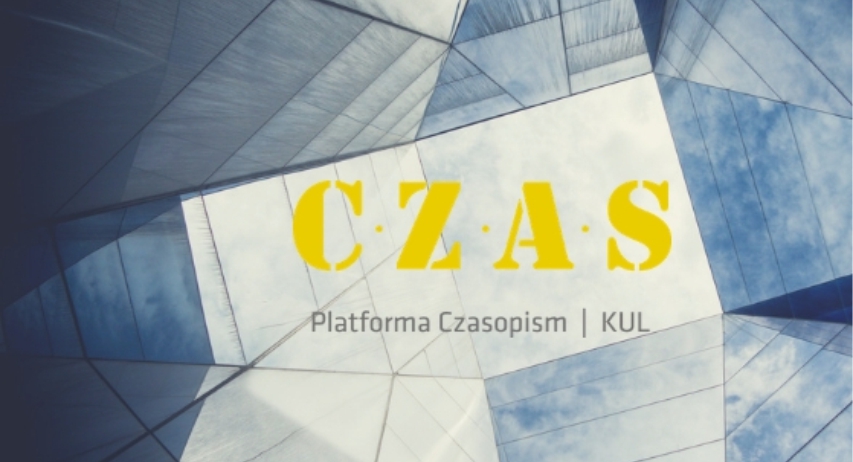Blessings in the Hispanic-Mozarabic Rite and Its Theological Significance
Abstract
The article examines the manner of celebration and the theological significance of blessings in the Spanish-Mozarabic rite, situating them within both historical and systematic contexts. It highlights the presence of numerous blessing rites in the Liber Ordinum, which articulate a request to subordinate human activities and situations to God’s power, invoking God’s blessing. Theologically, as articulated by Thomas Aquinas, this blessing represents a ‘multiplication’ of good in specific human situations. Additionally, the blessings contain elements of exorcism, which serve to liberate individuals from the influence of evil spirits. To elucidate the theological significance of these blessings, the article first analyzes the scope of blessings in the Liber Ordinum. It then explores the meaning of the blessing within the Mass, particularly the blessing given before the reception of Holy Communion and its connection to the sacrament. Finally, the article delineates the main theological ideas present in the prayers of the blessings in the Spanish rite.
Keywords:
Mozarabs, blessings, exorcism, Visigoths, sacramentaleReferences
Anguita Jaén, José María, and María Concepción Fernández López. 2008. “Las preces hispánicas. Puesta al día y novedades.” Exemplaria Classica 12:155–80. https://doi.org/10.33776/ec.v12i0.15. (Crossref)
Berry, John Anthony. 2023. “Aquinas’s Understanding of Religion.” Religions 14 (7): 855–55. https://doi.org/10.3390/rel14070855. (Crossref)
Bouyer, Louis. 1963. Rite and Man: Natural Sacredness and Christian Liturgy. Translated by M. Joseph Costelloe. Liturgical Studies 7. Notre Dame, IN: University of Notre Dame Press.
Carlin, Michael S. 2018. “The Rite of Matrimony (‘Ordo qualiter agant illi qui nubere volunt’) in the Ritual of San Isidoro, León (León, Archivo de la Real Colegiata de San Isidoro, cod. 12).” Miscellània Litúrgica Catalana 26:179–20. https://doi.org/10.2436/20.1002.01.36.
Carrero Santamaría, Eduardo. 2015. “La organización del espacio litúrgico hispánico entre los siglos VI y XI.” Antiquité Tardive 23:239–48. (Crossref)
Echevarria, Ana. 2017. “Translocating Religion in the Mediterranean Space: Monastic Confrontation Under Muslim Dominion.” In Locating Religions Contact, Diversity and Translocality, edited by Reinhold F. Glei and Nikolas Jaspert, 94–122. Leiden–Boston: Brill. (Crossref)
Ferrer Grenesche, Juan-Miguel. 2015. “Elementy kultury ‘gockiej’ w liturgii hiszpańsko-mozarabskiej.” Teologia i Człowiek 27 (3): 109–20. https://doi.org/10.12775/TiCz.2014.039. (Crossref)
Godoy Fernández, Cristina. 1989. “Arquitectura cristiana y liturgia: Reflexiones en torno a la interpretación funcional de los espacios.” Espacio, Tiempo y Forma. Serie 1: Prehistoria y Arqueología 2:355–88. (Crossref)
Gros y Pujol, Miquel dels Sants. 2004. “L’antic ‘Ordo Nubentium’ gallicà i les seves adaptacions romano-franques d’època carolíngia.” Revista Catalana de Teología 29 (1): 75–88.
Guerrero-Troncoso, Hernán. 2021. “San Anselmo y los albores de la ‘scientia transcendens.’ Una interpretación aviceniana de la ‘regula Anselmi.’” Anuario Filosófico 54 (2): 235–63. https://doi.org/10.15581/009.54.2.001. (Crossref)
Houts van, Elisabeth. 2023. “The Blessing of the Wedding Bedchamber in North-Western Europe, c.950–c.1200.” Studies in Church History 59:119–41. (Crossref)
Ivorra, Adolfo. 2016. Doxología: Aproximación a la antropología litúrgica. Barcelona: Centre de Pastoral Litúrgica.
Janini, José, ed. 1981. Liber Ordinum sacerdotal: Cod. Silos. Arch. Monástico, 3. Studia Silensia 7. Silos: Abadía de Silos. (= LOS).
Janini, José, ed. 1991. Liber Ordinum episcopal: Cod. Silos. Arch. Monástico, 4. Studia Silensia 15. Silos: Abadía de Silos. (= LOE).
Krynicka, Tatiana. 2024. “Entre Dios y elh: La gran aventura en común (‘De ortu et obitu Patrum’ de Isidoro de Sevilla).” Isidorianum 33 (1): 99–124. https://doi.org/10.46543/ISID.2433.1007. (Crossref)
Kurt, Andrew. 2015. “Lay Piety in Visigothic Iberia: Liturgical and Paraliturgical Forms.” Journal of Medieval Iberian Studies 8 (1): 1–37. https://doi.org/10.1080/17546559.2015.1081257. (Crossref)
Lázaro Pulido, Manuel. 2005. La creación en Buenaventura: Acercamiento filosófico a la metafísica expresiva del ser finite. Pensiero Francescano 5. Grottaferrata Roma: Frati Editori di Quaracchi.
Martín Barba, José Julio. 2016. “La Cruz de Oviedo.” Revista Digital de Iconografía Medieval 8 (15): 27–50.
Moeller, Edmund. 1969. “Les bénédictionnaires d’Augsbourg et de Berlin.” Questions Liturgiques et Paroissiales 50:123–39.
Mullins, Andy. 2022. “Rationality and Human Fulfilment Clarified by a Thomistic Metaphysics of Participation.” Scientia et Fides 10 (1): 177–95. https://doi.org/10.12775/SetF.2022.009. (Crossref)
Nannini, Andrea, and Marcin Trepczyński. 2022. “‘In principio’: The Metaphysical Exegesis of John 1:1 by Albert the Great, Bonaventure and Thomas Aquinas.” Biblica et Patristica Thoruniensia 15 (2): 41–54. https://doi.org/10.12775/BPTh.2022.009. (Crossref)
Olivar, Alejandro. 1953. El Sacramentario de Vich: Estudio y edición. Monumenta Hispaniae Sacra. Serie Litúrgica 4. Barcelona: Consejo Superior de Investigaciones Científicas.
Pick, Lucy K. 2011. “Liturgical Renewal in Two Eleventh-Century Royal Spanish Prayerbooks.” Traditio 66:27–66. https://doi.org/10.1017/S0362152900001112. (Crossref)
Pinell, Jordi. 1998. Liturgia hispánica. Barcelona: Centre de Pastoral Litúrgica.
Porosło, Krzysztof. 2023. “Wielość teorii dotyczących epiklezy rytu hiszpańsko-mozarabskiego.” Wrocławski Przegląd Teologiczny 31 (1): 113–38. https://doi.org/10.34839/wpt.2023 .31.1.113-138. (Crossref)
Rivard, Derek. 2009. Blessing the World: Ritual and Lay Piety in Medieval Religion. Washington, D.C.: Catholic University of America Press.
Roszak , Piotr. 2015. Mozarabowie i ich liturgia: Chrystologia rytu hiszpańsko-mozarabskiego. Toruń: Wydawnictwo Naukowe Uniwersytetu Mikołaja Kopernika.
Roszak, Piotr. 2016. “Spanish-Mozarabic Funeral Rituals: A Contribution to the Eschatology of the Rite.” Quaestiones Medii Aevi Novae 21:207–25.
Roszak, Piotr. 2023. “El contenido teológico de las Misas de sacerdote por sí mismo en el ‘Liber Ordinum’ del rito hispano-mozárabe.” In Spes mea unica: Miscellanea offerta a sua Ecc.
Mons. Andrzej Wojciech Suski, edited by Manlio Sodi and Daniel Brzeziński, 281–94. Roma: EDUSC.
Roszak, Piotr, and Tomasz Gutowski. 2021. “Pobożność jako cnota relacyjna wg św. Tomasza z Akwinu.” Studia Gdańskie 48:93–103.
Salvador-González, José María. 2022. “La Peste Negra: Reacciones ante la pandemia en la Edad Media. The Black Death: Reactions to the Pandemic in the Middle Ages.” De Medio Aevo 11 (2): 135–38. https://doi.org/10.5209/dmae.84283. (Crossref)
Tabaczek, Mariusz. 2024. “Is Pain Metaphysically Evil (Malum Simpliciter)? Some Thoughts from a Thomistic Perspective.” Scientia et Fides 12 (1): 143–62. https://doi.org/10.12775/SetF.2024.008. (Crossref)
Thomas Aquinatis, Super Evangelium S. Matthaei lectura: Thomas Aquinatis. 1951. Super Evangelium S. Matthaei lectura [Reportatio Leodegarii Bissuntini]. 5th ed. Edited by Raffaele Cai.Taurini–Romae: Marietti.
Thomas Aquinatis, Super secundam Epistolam ad Corinthios lectura: Thomas Aquinatis. 1953.
Super secundam Epistolam ad Corinthios lectura. Vol. 1 of Super Epistolas S. Pauli lectura. 8th ed. Edited by Raffaele Cai. Taurini–Romae: Marietti.
Thomas Aquinatis, Super Evangelium S. Ioannis lectura: Thomas Aquinatis. 1972. Super Evangelium S. Ioannis lectura. 6th ed. Edited by Raffaele Cai. Taurini–Romae: Marietti.
Witczyk, Henryk. 2003. “Bóg nieskory do gniewu – bogaty w miłosierdzie (Ps 103). ” Verbum Vitae 3:81–97. https://doi.org/10.31743/vv.1966. (Crossref)
Nicolaus Copernicus University in Toruń https://orcid.org/0000-0002-2723-2667
License

This work is licensed under a Creative Commons Attribution-NoDerivatives 4.0 International License.
The author(s) grant (s) to the Licensee a non-exclusive and royalty-free license in accordance with the provisions of the Appendix: LICENSE TO USE THE WORK







